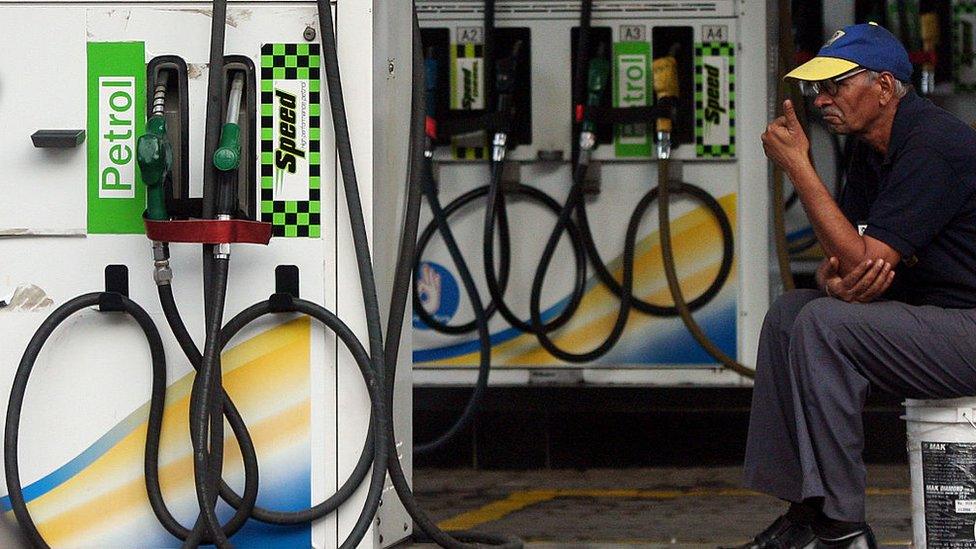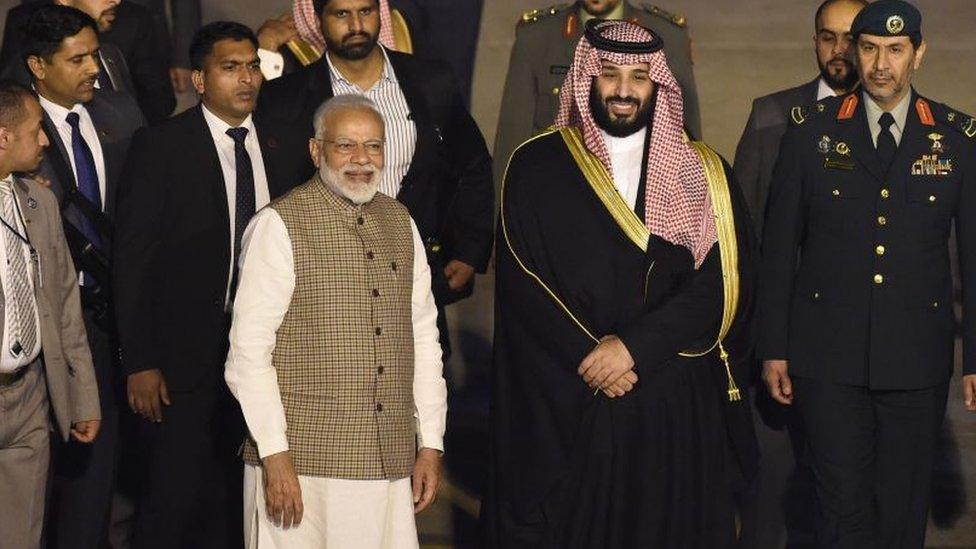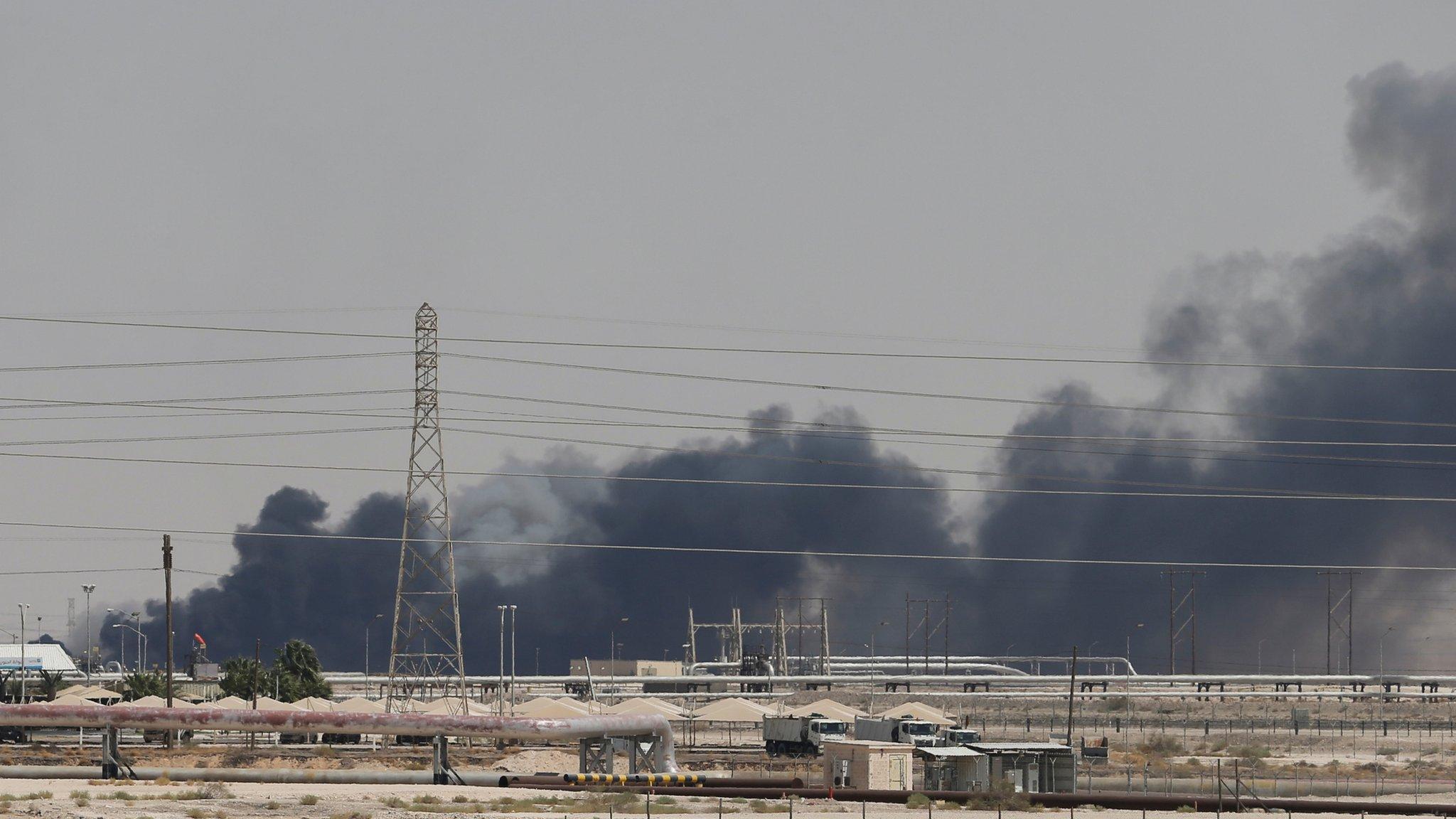What does the Saudi oil crisis mean for India?
- Published

A drone attack on the world's biggest oil-processing plant has triggered the largest jump in crude prices in decades and raised fears of a new conflict in the Middle East. Saudi Arabia has said its oil output will return to normal in the next few weeks, causing prices to ease a little. But the repercussions are still being felt thousands of kilometres away in India, explains the BBC's Suranjana Tewari.
What happened?
On 14 September, drones targeted Saudi Arabia's Abqaiq oil refinery and Khurais oil field. The attacks knocked out half of Saudi Arabia's total output and 5% of global oil supply.
Saudi Arabia is the world's biggest oil exporter, shipping more than seven million barrels daily. Saudi stocks stood at 188 million barrels in June, according to official data.
Yemen's Houthi rebels - who are aligned with Iran - have claimed responsibility for the attacks. The group has launched attacks on Saudi soil before, including on oil pipelines.
But this attack was on a much bigger scale, hitting the world's biggest oil-processing plant as well as another oil field.
Saudi Arabia has said that production will be back to normal by the end of September, which has slightly calmed oil markets.
What's India got to do with it?
India imports nearly 83% of the oil it consumes, making it one of the biggest importers of oil in the world.
Most of its crude oil and cooking gas comes from Iraq and Saudi Arabia.
It used to import more than 10% of its oil from Iran. However, earlier this year, the US pressured India to stop buying Iranian oil after walking out of the nuclear deal.
India also imports from other countries like the US, but at a higher cost.
Abqaiq has the world's largest oil processing plant
"India viewed Saudi Arabia as amongst the safest suppliers in the world," BJP spokesperson and energy expert Narendra Taneja told the BBC. "With this sophisticated attack and the precision with which the attack was done, we have now realised that their facilities are vulnerable and that does make us anxious."
He added that a lot would now depend on how Saudi Arabia responds to the attack - any military action would lead to escalation in the region, which could then disrupt supplies from the entire Gulf region.
"Right now, the worry for India is the price - but if the supply is not properly resumed in the next two weeks, then we will also have to worry about the supply."
In the last seven years, India's energy strategy has focused on diversifying sources of supply.
"We are importing from Africa and the US, but the Middle East remains our main source," he said. "India will have to make constant efforts to diversify more," Mr Taneja said.
What does it mean for Indians?
It depends on how long production is stalled. Saudi Arabia says it will take a few weeks to repair the facility.
But any longer will have a further impact on the price of oil and that could cause India's import costs to go up.
The Indian government is already stretched financially and so higher costs mean it has less cash with which to effectively tackle its economic slowdown.
The price of petrol and diesel could rise if crude prices globally continue to rise.

Indian Prime Minister Narendra Modi with Saudi crown prince Mohammed Bin Salman in February
Every one dollar increase in the price of oil raises India's import bill by $1.5bn every year.
It would also affect many industries, including manufacturing and aviation, and can accelerate inflation.
By-products of crude oil are also used in the production of items like plastic and tyres, which may become more expensive.
So, what can be done?
Not much, if experts are to be believed.
"The government may not be able to do much right now," Madan Sadnavis, an economist, said.
"It can buffer supplies through reserves which we have which will help perhaps a month or so. If the crisis persists, it can cut taxes, but that affects revenue and hence the fiscal deficit. But as long as the price remains less than $70 a barrel, the shock can be absorbed," he added.
- Published16 September 2019

- Published17 September 2019
